6. Double Suicide (1969)
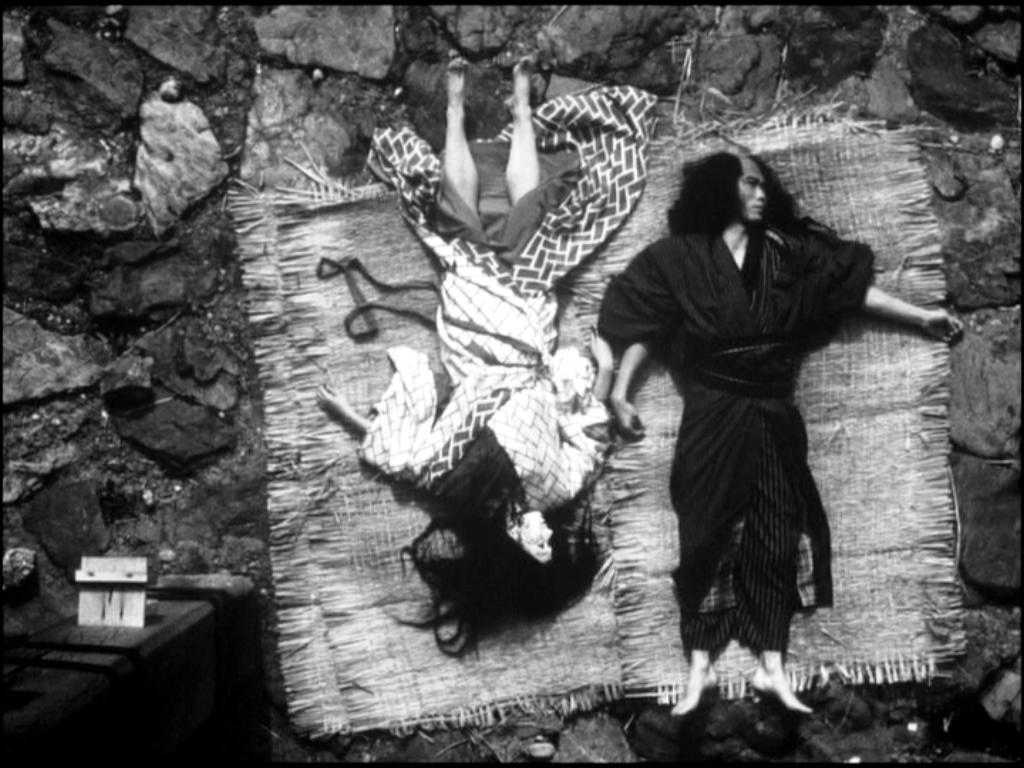
Japanese films started to gain popularity in Western culture starting in the 1950s. Many were fascinated by the exotic Japanese culture but, rather ironically, mostly by the more relatable western aspects of it (even samurai could translate out to western gunslingers).
Many of the truly Eastern mores were harder to understand at the time. This can account for why Akira Kurosawa, who was considered very Western by the Japanese, was quite popular in the West from an early date while Yasujiro Ozu, long held to be the greatest of filmmakers in his homeland, had to wait for the wider world culture to catch up with him. One film that also suffered from this syndrome is director Masahiro Shinoda’s “Double Suicide.”
The film concerns two lovers (obviously ill-fated, per the title), involving a married man in feudal Japan who has shamefully forsaken his loyal (but unattractive) wife and children for the love of a beautiful geisha, who has also brought shame upon herself with the relationship. The story is not an unusual one, though the full extent of the dishonor is germane to Japanese culture. The trickiness for Western audiences is in the handling.
The piece is based on a bunraku style play from 1721, one performed with life-size puppets manipulated onstage by stagehands covered completely in black (the kuroko). This style is largely preserved in the film, only substituting actors for the puppets after the opening scenes.
For example, at one juncture, the wife is reading a critical letter sent to her. The actress freezes while one of the kuroko takes the letter from her hand and brings it toward the camera for the viewer to see and read. Added to this is an enveloping device showing the actual film director setting up the production! Also, actress Shima Iwashita plays both the geisha and the wife, convincing in both roles and not coming across as the same woman.
This was somewhat unusual even in Japan. Bearing that in mind, this film was rather challenging for non-Japanese viewers and was not an immediate hit outside of Japan. However, for the viewer adventurous enough to try it (and perhaps to do some research before viewing), this is a fine cinematic experience.
7. Beware of a Holy Whore (1971)
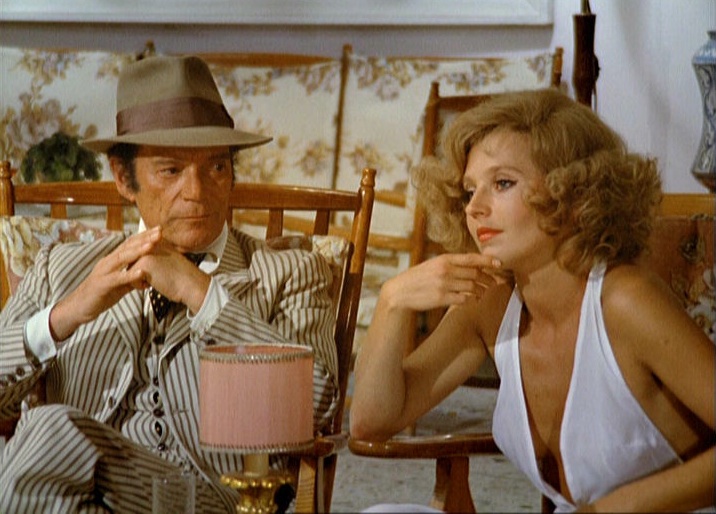
As stated previously, West German wunderkind Werner Rainer Fassbinder was so prolific in his abbreviated lifetime that it’s not surprising that his work hit many notes across the spectrum and ranged from very famous to overlooked. The overlooked are sprinkled over the course of his career, but tend to be grouped toward the beginning.
“Beware of a Holy Whore” (which would be memorable if only for that title) is in a sub-genre that seems closer to the hearts of filmmaking professionals than audiences, but which can be fascinating to the so inclined. This would be the ‘behind the scenes of motion pictures’ category.
Not everyone wants to know how the films they see (love or hate) are made. Very many films are made without any great incident happening, but there have been notable examples dotting film history. However, the majority of the films made by the turbulently brilliant and self-destructive (and just plain destructive at times) Fassbinder witnessed extreme behavior as the norm.
The film was closely inspired by the production of the filmmaker’s previous film, 1970’s “Whity.” While waiting for Fassbinder to get a star and/or funding, the cast and crew, holed up on location with way too much time and way too many substances and inclinations on their hands, got into some major mischief.
One of the cast members tells the others the plot of a Disney Goofy cartoon and reveals it to be a miasma of cross-dressing, sexual identity confusion, crime and humiliation… much like the story those making the film “Motherland or Death” will display in their own lives during the next small space of time (and one only wonders why Fassbinder didn’t actually make a film with that dire title).
Fassbinder himself, who was also an actor, appears in the film, though the director of the film within a film is played by Lou Castel. Even better is the casting of the filmmaker’s major muse, the great Hanna Schygulla, and rather interestingly, Eddie Constantine, a second rate US actor in crime films who, improbably, moved to Europe and became the darling of art house directors (especially Jean-Luc Godard in 1966’s “Alphaville”).
Also notable is the score of American singer/songwriter Leonard Cohen. Though this plainer early film may lack the baroque flourishes of Fassbinder’s later films, it is still a fine work in its own right, though one may take the filmmaker’s theme that people are never any good in groups and nothing good can come of them getting together with a grain of salt.
8. War Requiem (1989)
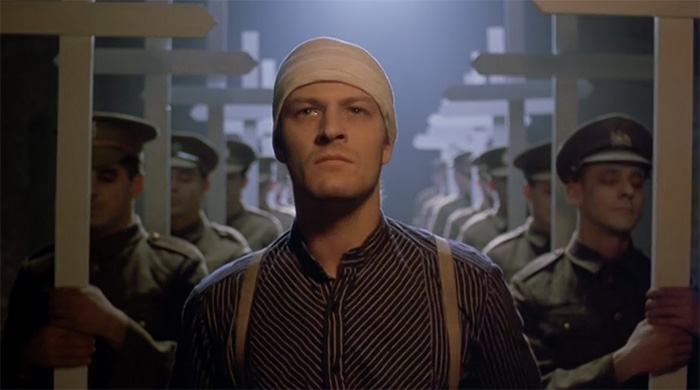
If cult movies didn’t already exist, one gets the idea that the late British director Derek Jarman would have invented them. Some artists couldn’t be commercial if their lives (or careers) depended on it, and Jarman was truly one of them. He will always be remembered as one of the earliest (and still one of the most important) cinematic voices in the LGBT community.
Yes, he made overtly gay films such as the tell-it-like-it-is bio-pic “Caravaggio” (1986) but he was also a relentless stylist and not always to the pleasure of any great part of the viewing public (and 1993’s “Blue,” a late work, which featured dialog spoken over a screen of plain light blue for its entire length, is perhaps the most extreme example).In its own way, the moving “War Requiem” is also an extreme work.
The title is better known as that of a major piece by composer Benjamin Britten (another major and open gay artist). The story, told without dialog as such, concerns an elderly soldier (the greatly renowned Laurence Olivier in his very last performance and one of the few he could manage in his then fragile state), remembering the experiences he and his wife, a nurse, experienced during World War I (Nathaniel Parker and Jarman friend Tilda Swinton play the pair).
The poems and images of the film also reference several of the many wars of the 20th century. Sean Bean and Nigel Terry round out the cast of this film, which was shot very quickly in historic Darenth Park Hospital in Kent. This one will surely always be a chamber piece for acquired tastes, but it does feature the deep emotionalism and sure handling which marked Jarman’s career.
9. The Sheltering Sky (1990)
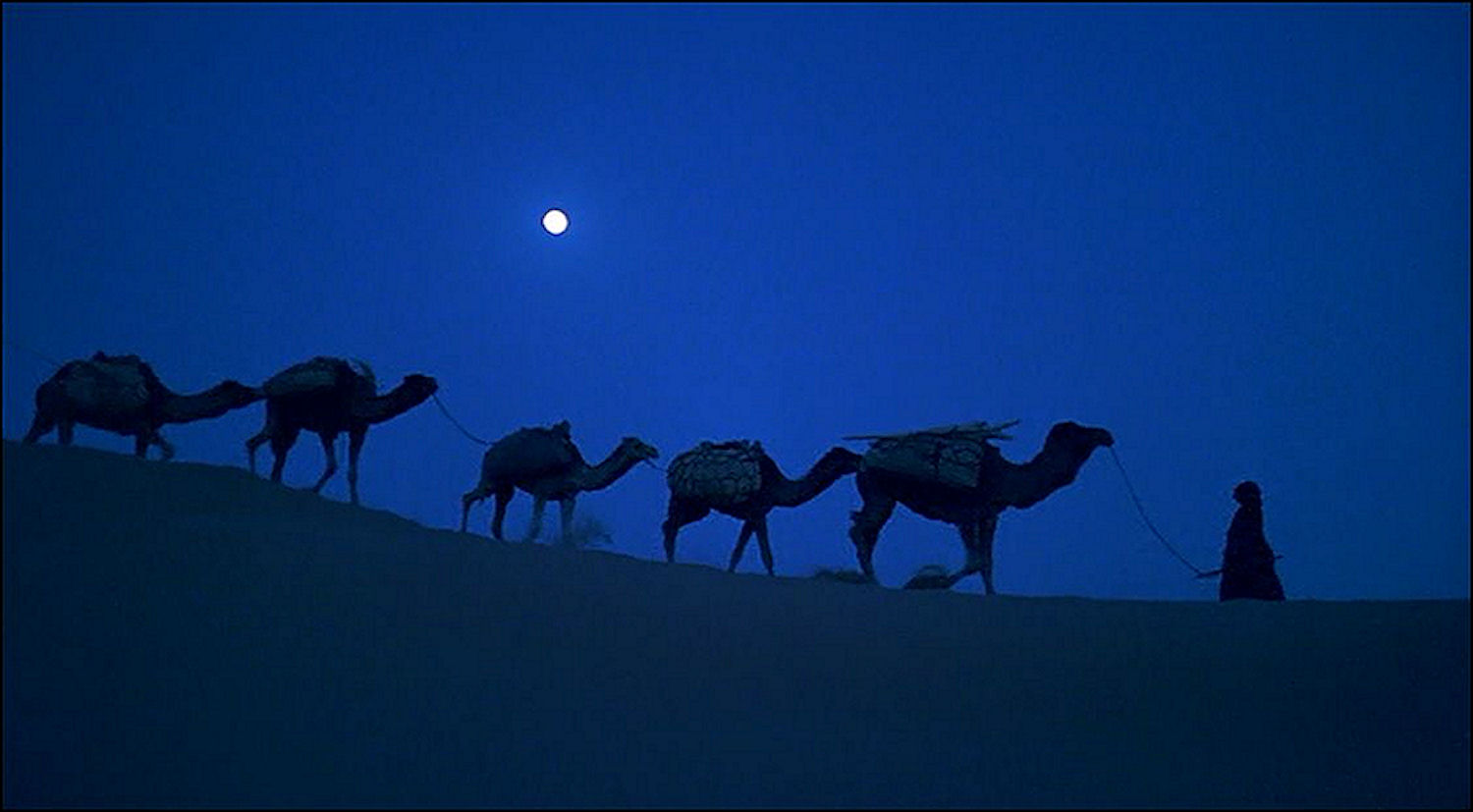
Italy’s Bernardo Bertolucci found acclaim pretty much from the beginning of his directorial career but, even at that, he never could take the easy route. His filmography is full of themes and projects which could be labeled “difficult” and provided audiences with a prickly time. Surely there could be no surer example of that than 1973’s famous/infamous “Last Tango in Paris,” which divided audiences and critics (and continues to do so). Even his Oscar-winning “The Last Emperor” (1987) was politically controversial (due to the director/writer’s unabashed communist ideas).
With this in mind, it’s not surprising that the filmmaker took on a neo-classic novel which had never been filmed due to the fact that it was considered nigh on unfilmable. This was the noted author Paul Bowles’ (him again!) rumination on sex, death, fidelity, infidelity, civilization and savagery (among other things), “The Sheltering Sky.” One of the aspects which makes the book so elusive is the fact that Bowles was a most poetic author and this novel is quite poetic.
The story concerns an American couple, Port and Kit Moresby (John Malkovich and Debra Winger), who arrive in post-World War II Tangier along with their friend Tunner (Campbell Scott). Tunner only intends to be a tourist there for a brief time, with the Moresbys wishing to stay for an indefinite time and explore the exotic desert/Arab world for which Tangier is only an entry point.
However, things don’t go as expected, to say the least. The ancient world will prove to be the undoing of the couple with plenty of sexuality and mysticism involved. Pointing up all of this is the occasional presence of Bowles himself (looking for all the world like a specter from another realm) spouting passages from the novel to underline various themes.
“The Sheltering Sky” was not one of Bertolucci’s big hits with either the public or critics. There is always a danger in visualizing a novel which has already been pictured within the minds of many readers over a long period of time. However, the desert cinematography is lovely, the period/regional detail exquisite, the performances well-rendered in difficult roles, and the script literate. If not a total success, then the film is full of worthwhile elements.
10. To Die For (1995)
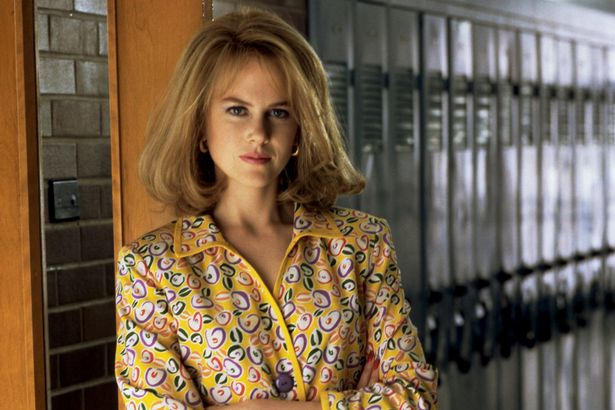
Stardom is far from an exact science and many people who should be a star (on paper, at least) aren’t, while others who would seem to be long shots at best do make it. For someone who has all the prerequisites, Nicole Kidman hasn’t had the easiest path to stardom nor the smoothest time maintaining that stardom (though she has been on the upswing recently). In all honesty, for all her beauty and talent, Kidman is a someone cold and unsympathetic presence (call it the Vivien Leigh syndrome). Perhaps this is why one of her best performances and films wasn’t really the hit it deserved to be.
Taken from the acclaimed novel by Joyce Maynard (who makes a cameo appearance), the film employs a complex structure to tell the sinister and twisting story of Suzanne Stone (Miss Kidman), a woman who loved media too well and none too wisely. The film is presented as a documentary concerning Suzanne as told by those involved in the story which made the woman a tabloid sensation.
Though the exact details of the event aren’t revealed until a large part of the film’s running time has passed, it’s easy to discern that the nature of the event is criminal. Also, popping up throughout the film, Suzanne herself addresses the camera in telling her own skewed side of things against a plain white backdrop (the reason for this turns out to be not just concrete but provides the film’s punchline).
In essence, Suzanne always wished to be famous and was sure that TV was the only way to go in achieving this goal. While working in local television, she marries a handsome and sexy young man (Matt Dillon) who turns out to be as undriven and unfocused (and style-free) as Suzanne is intent. After a short time, she decides that he is more a liability than an asset, but that divorce is so tawdry. To this end, she recruits a group of none-too-bright teenagers (principally a character played by a young and talented Joaquin Phoenix) who will literally kill for her.
The film has a wonderful comedic-satiric tone which neatly redeems it from being a mundane “true crime” drama (it was loosely inspired by real-life case). The look of the film accurately reflects the main character’s shiny, shallow view of life. The cast also includes such well-chosen actors as Illeana Douglas, Holland Taylor, George Segal, Casey Affleck, Wayne Knight, Dan Hedaya and Kurtwood Smith. However, no one can top Kidman in what is still one of her best roles and performances (it fits her like a glove).
Author Bio: Woodson Hughes is a long-time librarian and an even longer time student/fan of film, cinema and movies. He has supervised and been publicist for three different film socieities over the years. He is married to the lovely Natalie Holden-Hughes, his eternal inspiration and wife of nearly four years.